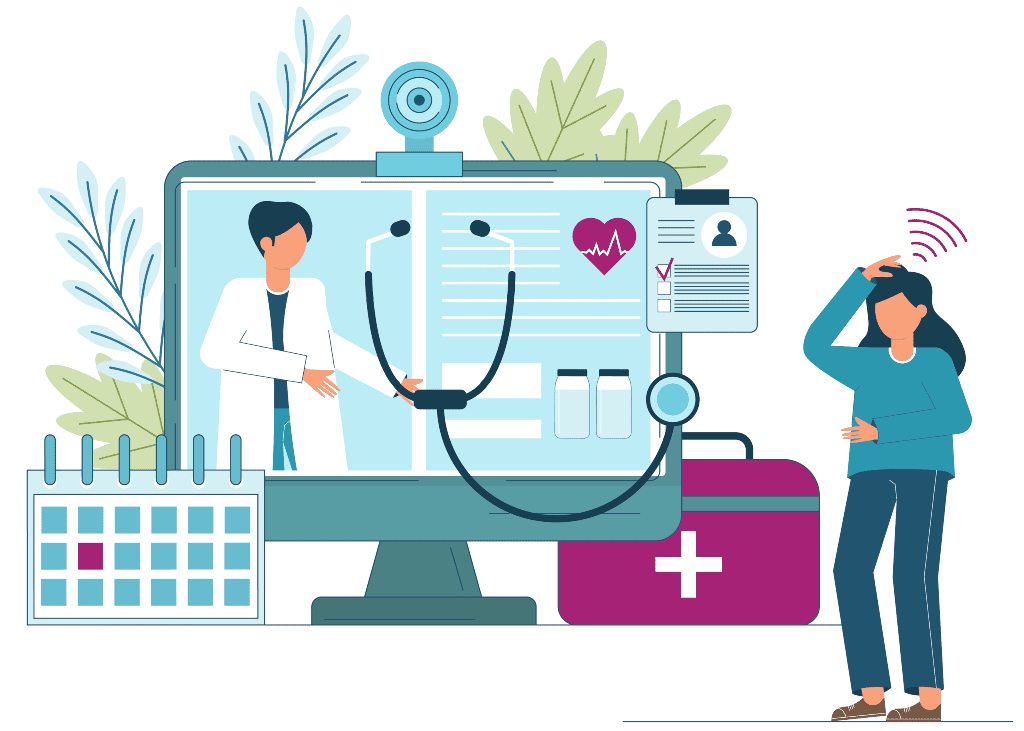
Telehealth (noun; the provision of healthcare remotely by means of telecommunications technology) now allows consumers to receive healthcare from wherever they are: the comfort of a Livingroom, at the office, or while traveling away from home. Seeing your provider in person can be difficult when you have transportation issues, a lack of mobility, a busy schedule or are traveling. With telehealth (or telemedicine), you can use your smartphone, desktop computer, laptop, tablet or other technology with video capabilities to connect with your care provider. Through your device, you can chat with your provider as well as send and receive messages.
As an added bonus, telehealth is often a fraction of the cost when compared to an in-person visit with your doctor.
The Benefits of Telehealth
Quickly increasing in popularity, virtual healthcare saves patients not only time, but also money. The emergence of telehealth was primarily to make healthcare accessible to people who live in rural or isolated communities, or have limited mobility, time or transportation options. That being said, telehealth is equally beneficial for today's working individual with a busy schedule. Have you ever found yourself in need of a quick doctor consultation without the time to drive in to a facility and wait for one?
The estimated cost of a telehealth or virtual doctor visit is $59 or less. Pick up your phone, tablet, or laptop and schedule a virtual, face-to-face chat with a Board-Certified Doctor when faced with coughing, eye or ear pain, a fever, headache, nausea, sore throat or similar mild symptoms. Typically, your desired telehealth service will require the creation of an online account with the service provider, or calling of a toll-free number.
Types of Telehealth Care
Any virtual offering of healthcare services is considered telehealth and you can receive many types of care this way. Most telehealth services are available under most health plans. Check with your healthcare provider to see what services you may be able to access from home. You may be able to get:
• Wellness visits and other preventive care
• Prescriptions for medication
• Dermatology (skincare)
• Nutrition counseling
• Urgent care (limited) for common concerns including a sinus infection, back pain, urinary tract infections or rashes
• Remote monitoring services (where you might use a device that sends information to your provider about your vital signs, for example)
• Behavioral Health Care such as mental health counseling, follow-up care plans, or services for substance use disorders, including opioid use disorder
How to schedule a telehealth appointment
If you have a primary care provider, call their office. Many providers now offer telehealth, even if they didn’t before. If you are looking for a new primary care provider, always call and ask if the provider you are interested in seeing is taking new patients. Ask your provider:
• Do you offer telehealth visits?
• Is telehealth a good choice for my specific visit needs?
• How do I schedule my telehealth appointment?
• What technology will I need, and should I download an app or software?
• If you’re concerned about privacy, ask how your personal information will be protected.
Prepare for your telehealth appointment
• Make sure you have access to a phone or video capable device with internet
• Find a quiet, private place where you are comfortable
• Take a video or photo of anything you’d like to show the provider. Send the images ahead of your appointment
• Have information ready about your allergies, medications, hospitalizations, surgeries, and test results. • Write down any questions you have
• Prepare to take notes
• Be ready to show the devices or tools that help you monitor your chronic conditions, if you use any. For example, have your blood pressure monitor nearby
What to expect during your telehealth visit
• For a scheduled visit, your provider will give you instructions about how to access their system
• For an unscheduled visit, you’ll usually connect to a provider through a website
• The provider should ask if you agree or “consent” to services by telehealth
• You’ll talk with a provider. This will be similar to discussions during an office visit
• Let your provider know if you have trouble hearing or seeing them. If there are technical problems, they may be able to continue just by phone
• At the end, the provider will let you know their recommendations. They may share more information by email or mail. They will let you know how to contact them if you have questions or concerns
Reaping the benefits of telehealth services is easy and cost-effective. Inquire with your Human Resources department to find out what virtual health services are available to you through your company benefits plan.
Readers are also enjoying:

Health Insurance ID Card
Your health insurance ID card is an important piece of the welcome packet from your provider. Your Health Insurance ID Card is proof of your insurance. If you did not receive this card, call your provider to request a one.
Every Health Insurance ID Card now has 10 crucial pieces of information that you should be aware of.

